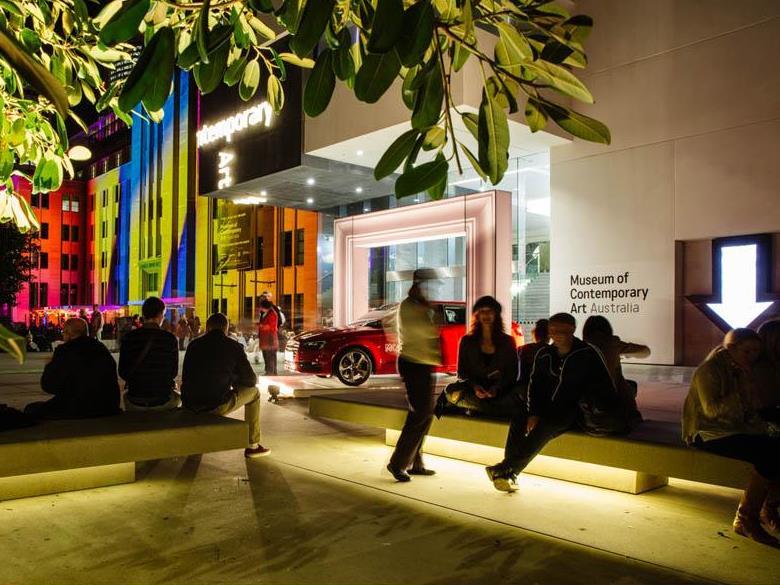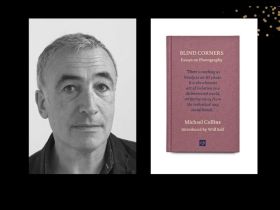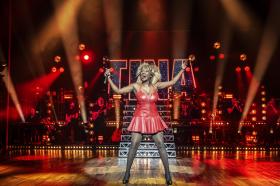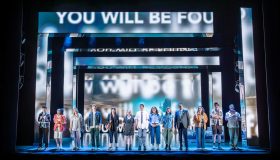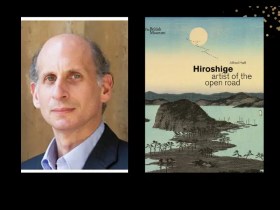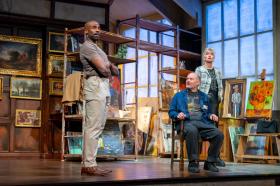ARTBAR at the MCA is a success story in this new future of corporate partnerships; image Rebecca Baumann’s ARTBAR for Vivid Sydney; supplied.
For the past two days Remix Sydney has unpacked the intersections between culture and entrepreneurship, debunking perceptions and stimulating disruption – arguably the buzzword of the two day festival. While technical innovation sat core to most emerging trends, so too has a rethinking and redefinition of “partnerships” within the future cultural landscape.
In the arts sector, these questions play out in the issue of corporate sponsorship. Given the current unstable funding environment in the arts, it was a conversation had not soon enough.
Leading the discussion, Kate Dezarnaulds, Head of Partnerships TEDxSydney, reminded us that corporate sponsorship is morphing into a much more sophisticated form of cultural branding.
‘We are moving towards a point where the most effective partnerships have been co-produced between a range of players such as artists, technologists, agencies brands and media organisations rather than a transaction based on lolly for logos.’
Dezamaulds’s regularly told by TEDx partners that the old tool kit doesn’t apply any more. ‘The line that money can’t buy experience doesn’t quite have the shine to it now; everyone has figured out money can buy those experiences. That era is nearly over,’ she warned.
It was a sentiment shared by fellow panelist John Richardson, Director of Development AGNSW, who has a huge task in front of him with last week’s announcement of Sydney Modern’s $450million price tag.
‘So instead of us all running around chasing money from year to year and trying to just stay alive, how can we work harder to make longer term projects a reality; that create something for the institution of value?’ questioned Richardson.
‘It is not about 500,000 people seeing your logo on an exhibition wall; it is about connectivity and how you integrate that brand into the experience and make it genuine. And, if you can measure that, “how genuine the audience felt towards its affinity to the brand”, that is going to accelerate those relationships.
‘The decision making process goes off shore for many of these companies in terms of marketing and sponsorship spend so the reporting is going to be critical for the future. It is a matter of, “how do we build in that research and recording into all the partnership we do?” That is what we are facing today in this space,’ said Richardson.
Dezamaulds said that corporates today are looking for ways to externally reference their own values in the cultural space; to find an authentic place to communicate and to show that they recognise progress comes from this disruptive space.
‘In the last five years the real push towards brand alignment has been viewed as the holy grail – the more aligned your brands, the more syncronistic they are, the better the partnership seems to be,’ advised Dezamaulds. ‘Art is a great way to make your company porous to those influences.’
Dezamaulds also felt that, as cultural organisations, we are becoming very good at creating this new extraordinary library of content that spins out of storytelling – citing TEDx videos available online (and I would add organisations like Sydney Living Museum are doing a great job in this arena). She felt, however, that we are not doing a very good job of getting partners to value that content as part of the equation, and a future trends is ripe for opening that up.

TEDxSydney partnerships strategist Kate Dezarnaulds talks the ins and the outs trending in today’s sponsorship sector at Remix; Photo ArtsHub.
Tapping into the experience economy
Other trends are also at play which require more sophisticated brand strategies. For example, the role of consumers has shifted. They have an appetite and expectation to interact with their favourite brands and products in new ways rather than passively consume and this has been further accelerated and enabled by the digital revolution.
The wider growth of the experience economy and cultural consumption creates the potential for both individual creatives as well as cultural organisations to be major players and develop new types of innovative brand partnerships.
Richardson cited the success of AGNSWs partnership with Canon as an example, which embedded the sponsor and a visitor experience within the exhibition environment. It is a partnership that picks up and plays with the new zeitgeist of storytelling within museums and utilitising technology through “the selfie”.
Perhaps the great success locally is Museum of Contemporary Arts’s (MCA) ARTBAR supported – and cleverly tagged as “driven” – by Audi. Last week the partnership celebrated its third anniversary with a new installation by Rebecca Baumann for Vivid Sydney.

Mechanised Colour Assemblage on facade of MCA created by Rebecca Baumann and French light artist Danny Rose; Photo ArtsHub.
Like the Canon experience, it ceased a moment capturing Sydney’s growing taste for late-night art programming, and elevating the gallery experience with events – everything from life drawing classes over a DJ set, artist-led yoga, a Cat Café with themed cocktails, and parkour stunts in the Galleries.
Anna Burgdorf, General Manager of Corporate Communications for Audi Australia said: ‘The concept of MCA’s ARTBAR really is the ideal match for our brand and it allows us to engage and interact with a sophisticated, art-loving audience and offer inspiring experiences to the community.’
While not a panelist, MCA Director Elizabeth Ann Macgregor added of ARTBAR: ‘It’s become one of our most successful public programs, playing a crucial role in our mission to connect a diverse audience with the work of living artists. ARTBAR truly is… art but not as you know it.’
Speaking from the position of an engaged sponsor, panelist Jayant Murty, Director Strategy Media and Integrated Marketing for Intel (Asia Pacific) said: ‘For brands like us the real joy is not about doing anymore, it is about building platforms and you sit back and watch in admiration; It’s really not what you do with your money, it’s what you do so other people can do things with their time.’
Successful corporate partnerships: vanity or sanity?
Short answer, yes said Matt Jackson, Founder of Affectors. ‘I don’t think there is anything wrong with that; I think if we are proud of things we have done then we should put that on show in the most glamorous way we can to share with the most people we can.’
Dezamaulds is sticking with the sanity route, as she felt it is the genuine way of creating authentic experiences and authentic partnerships. ‘We have all learn a lot from each other’s sectors. Sponsorship is not about broadcasting to audiences so much anymore as a shift to networking and building communities, and migrating those communities from your organisation to their organisation and visa-versa.’
Jackson believes strongly that the trend for corporate sponsorship is going down. ‘Unless artists start to show empathy for their sponsors, you are going to loose that source of funding. What if it is not about how great we are, but it is genuinely how well we create value for our client? Corporate sponsorship is a creative relationship, not a transaction.’
Jackson’s tips were short and “on the money”:
- Question what you believe – everything you believe is up for question
- Forcing your opinion on a sponsor doesn’t get a dollar
- Be interested, not interesting – ask questions
- Don’t pretend what you are doing is going to create value to the client, if they haven’t suggested that themselves
- Do not treat your sponsor as a family friend when you introduce them – this is X, nice now get off stage so we can do our thing
Dezamaulds’ view in contrast is that it is growing in more boutique ways. ‘My personal vision is convincing people with money to value creativity one partnership at a time and really hoping that we are working towards a space where creative industries are self-sustaining and where businesses really value ideas and creativity.’
The rise of the producer-maker movement and social impact projects have been strong trends rising in this sponsorship space. She felt that a future trend was in the co-creator space where brands and organisations, artists and media organisations get together to conceive something new altogether.
Despite government and corporates pulling back, Richardson added that he felt it was going to get a lot easier to find money. ‘It is getting more acute and that is forcing people to come together. I think people in money are in search of people they can aid. Not necessarily from the bank, the venture capitalist or the government but, I think, the Kickstarter kind where we find money from each other.’
Richardson’s advise was to loosen up. After working a decade with the Sydney football team the Rabbitohs before joining the AGNSW, he felt that the arts could learn to be a little more raw from the sports sector. ‘Thinking about the different layers that we create experiences, and using every aspect of your environment to create an experience for your corporate partner, I have learnt that it doesn’t always have to be incredibly high end. Sometimes we are polishing it up too much, and it think if you keep it quite raw sometimes – no notes, no presentation, no preparation – I think that (pitch / experience) can also be successful.’
So vanity aside and sanity in the fore, corporate sponsorship has entered a new era of partnering, and unless we take Jackson’s lesson of empathy and Murty’s idea of creating platforms of enjoyment, and check the ‘lollies for logos’ at the door, corporates will just go elsewhere. Cultural organisations need to shift sideways in how they think about sponsorship and brand alignment if they are to be sustainable and engaged for our new future.
Not speaking at the panel,but, appropriately, supporting it was Creative Partnerships (formerly Business Arts Foundation Australia). Remix Sydney was held at Sydney Town Hall 2-3 June.
Upcoming MCA ARTBAR events driven by Audi:
Friday 26 June – Dara Gill
Friday 31 July – Renny Kogers
Friday 28 August – Haines & Hinterding
Friday 25 September – Primavera Edition
Friday 30 October – Hissy Fit
Friday 27 November – 2015 Finale
For more info: www.mca.com.au/artbar
